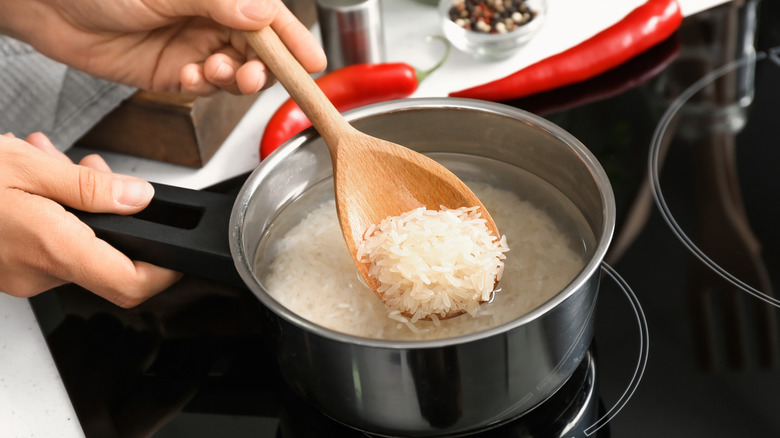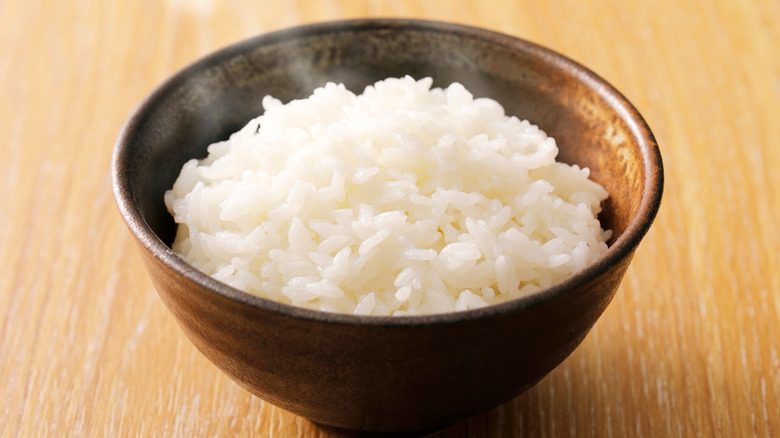Why Simmered And Steamed Rice Are Basically The Same Thing
How do you cook your rice? Maybe you opt for a giant pot, a bunch of water, and a dash of salt. Or perhaps you're more exact, pouring precise amounts of rice and water into the holy grail of good grain, the rice cooker. It may surprise you that no matter what equipment you use, you're basically cooking your rice in one of two ways: boiling or simmering/steaming.
According to Simply Recipes, the boiling method is akin to how you cook pasta. You don't need to work with exact ratios of water; instead, you simply need enough water to cover the rice continuously during cooking. Once the rice has absorbed enough liquid to create your ideal texture, you'll drain your rice in a colander or strainer.
This brings us to the other methods: simmering and steaming. From the outside, these seem to be two different processes: Simmering is cooking food via gentle boiling, while steaming cooks food with the water vapor released during boiling. So why are the terms often treated as interchangeable when referring to cooking rice?
Simmered and steamed rice both result from a low boil and steam
According to The Culinary Pro, steaming and simmering rice take a ratio of water, stock, or your choice of liquid, "two to five parts," which is then mixed with "one part of the grains" and brought to a low boil. Basically, these two processes begin with boiling your liquid and finish with heated water vapor or steam, resulting in thoroughly cooked rice. Let's break it down.
Per MasterClass, simmered rice comes down to three steps: rinse, boil, and steam. After you've completed the crucial step of rinsing your rice, you'll place it in a pot equipped with a tight-fitting lid. Add a precise ratio of water to rice (determined by the variety of rice) to the pot and heat it to a boil. Then immediately reduce the heat, so the water drops to a simmer, and cover the pot with that all-important lid. You're simmering and steaming your rice at this point, as the lid has trapped heated water vapor inside.
Even if the equipment changes, the way the rice gets fully cooked remains the same. The Woks of Life starts with an initial pre-soak of the grains, places them into a heat-proof bowl with water, and then transfers it all to a steamer. From there, you'll put the heat on high and allow the boiling water in the base of the steamer to work its magic on the rice. You're still using boiling water to get started, then allowing water vapor to plump up your rice — similar to how the steam from a simmer would work.
So the next time you create the perfect bowl of rice, don't get tripped up by the semantics of simmered versus steamed — just remember it takes both to achieve it.

